外研版六年级英语上册 Module10 Unit2 Go straight on教学课件
文档属性
| 名称 | 外研版六年级英语上册 Module10 Unit2 Go straight on教学课件 | 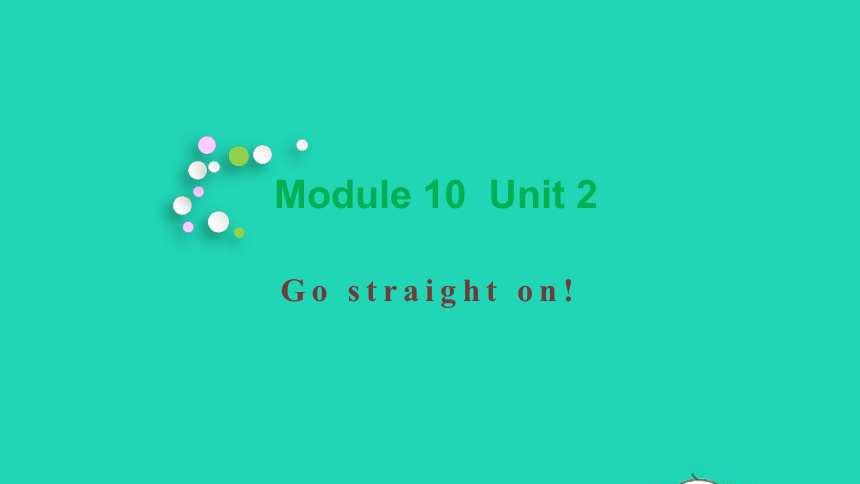 | |
| 格式 | ppt | ||
| 文件大小 | 2.9MB | ||
| 资源类型 | 试卷 | ||
| 版本资源 | 外研版(三年级起点) | ||
| 科目 | 英语 | ||
| 更新时间 | 2022-01-24 09:28:50 | ||
图片预览

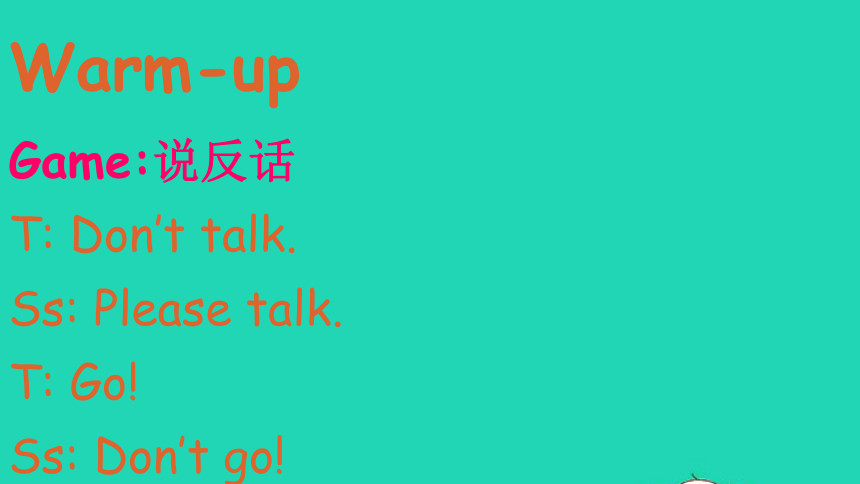


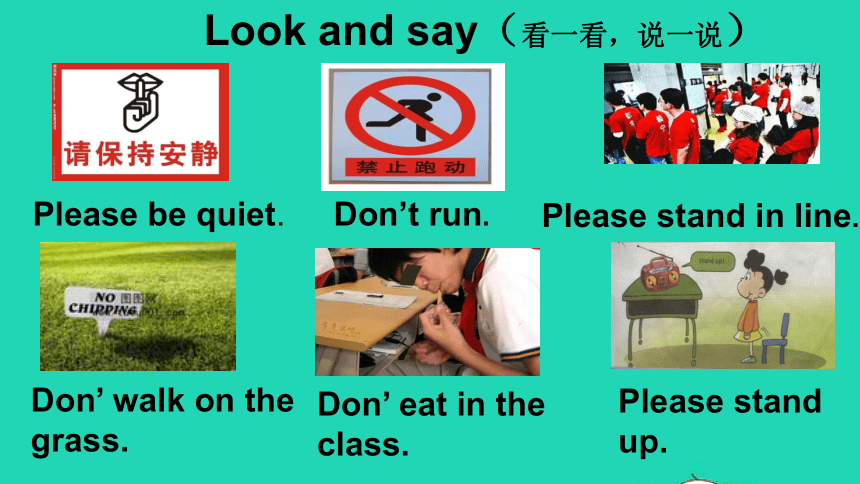
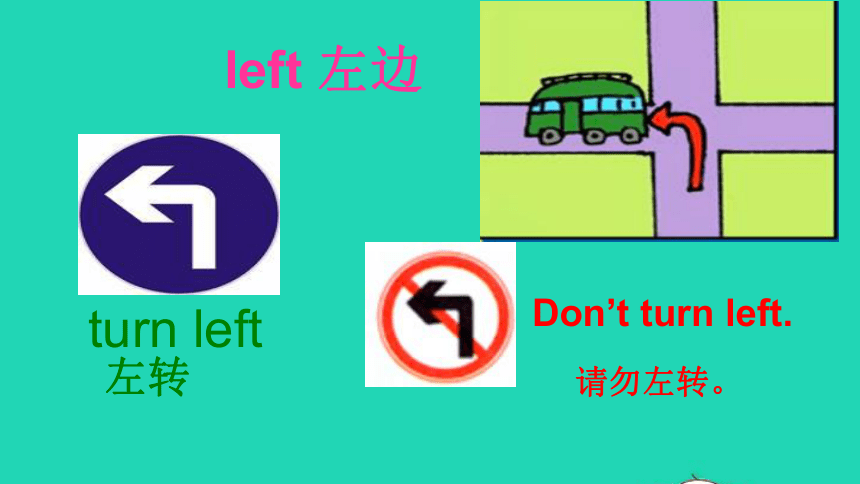
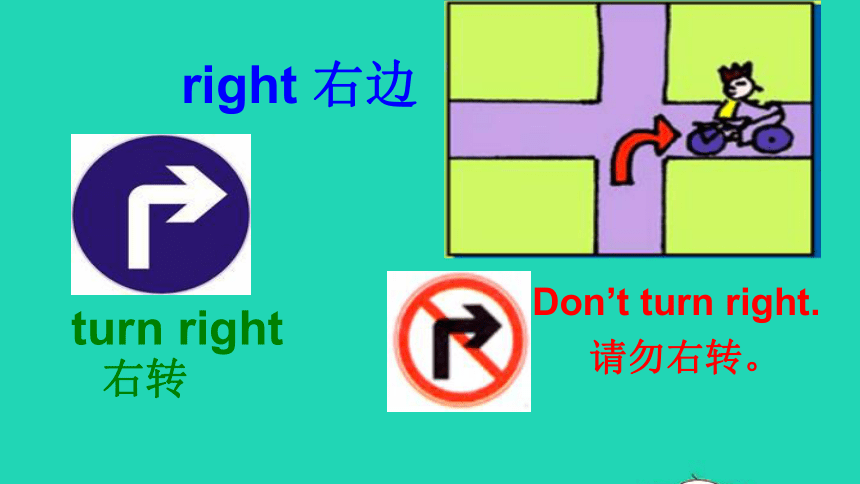
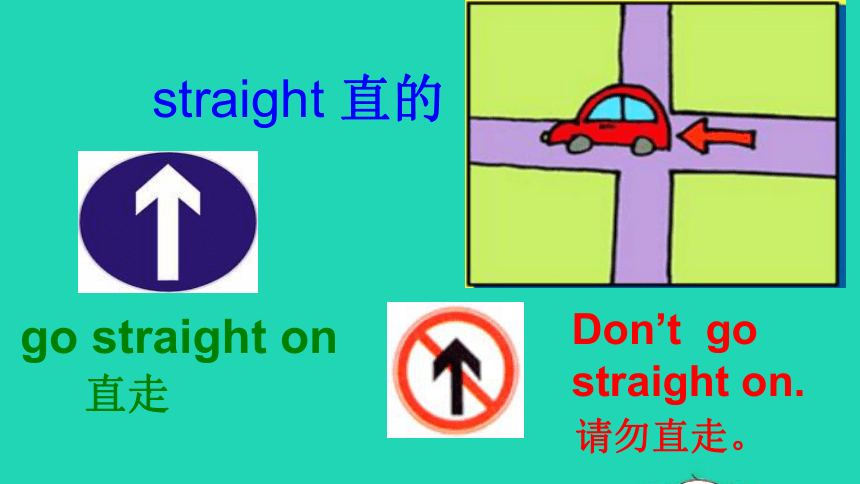
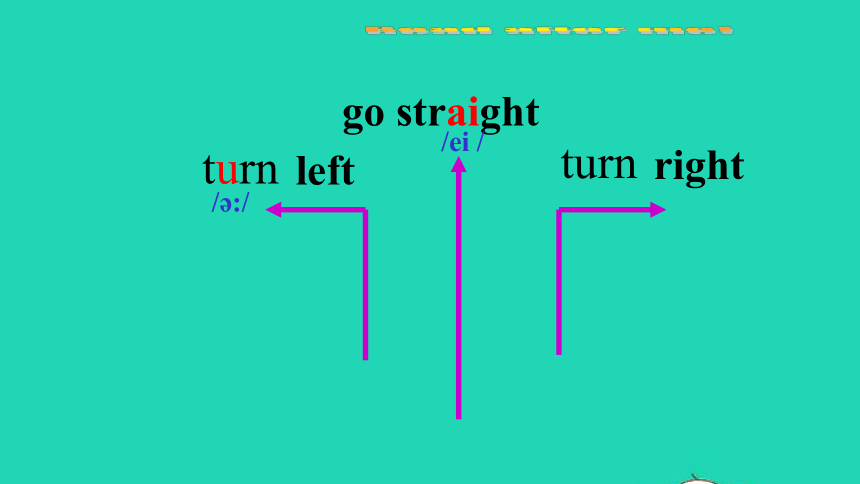
文档简介
(共23张PPT)
Go straight on!
Module 10 Unit 2
Warm-up
Game:说反话
T: Don’t talk.
Ss: Please talk.
T: Go!
Ss: Don’t go!
祈使句表示要求、命令让他人做某事,常以动词原形开头,出于礼貌我们有时会在句子开头或句子末尾加上please,祈使句的否定形式就是直接在动词前面加上Don’t,意为“不要……”
祈 使 句:
Review
祈使句无主语,主语you常省去。
动词原形谓语当,句首Don’t变否定。
朗读应当用降调,句末常标感叹号。
Look and say(看一看,说一说)
Please be quiet.
Don’t run.
Please stand in line.
Don’ walk on the grass.
Don’ eat in the class.
Please stand up.
turn left
left 左边
Don’t turn left.
左转
请勿左转。
turn right
right 右边
Don’t turn right.
右转
请勿右转。
go straight on
straight 直的
Don’t go straight on.
直走
请勿直走。
left
right
turn
turn
/ :/
go straight
/ei /
traffic lights
red
yellow
green
Stop, don’t go.
Wait
Go
Don’t ride a bicycle.
Be quiet.
Don’t walk.
Please walk.
Don’t smoke.
Don’t swim here.
Don’t walk.
Please turn right.
Don’t climb.
Do you know these sign(标志)
I’m lost.
Who can help me
My name is Dudu.
I live in Jiaomiao Primary School.
lake
park
A: Excuse me.
Where’s the park,
please
B: Go straight on…
“Excuse me.” 通常用来表示有礼貌地询问某事或客气地打断别人的话 ;意为对不起,打扰。
Read and repeat.
Please hurry.
Look at the library rules.
Go straight on!
Don’t walk on the grass.
Write the way from your home to our school.
Homework
My name is ______. I am ______ years old. I live in ______. Do you want to go to my home
First, __________________________.
Then __________________________.
Go straight on!
Module 10 Unit 2
Warm-up
Game:说反话
T: Don’t talk.
Ss: Please talk.
T: Go!
Ss: Don’t go!
祈使句表示要求、命令让他人做某事,常以动词原形开头,出于礼貌我们有时会在句子开头或句子末尾加上please,祈使句的否定形式就是直接在动词前面加上Don’t,意为“不要……”
祈 使 句:
Review
祈使句无主语,主语you常省去。
动词原形谓语当,句首Don’t变否定。
朗读应当用降调,句末常标感叹号。
Look and say(看一看,说一说)
Please be quiet.
Don’t run.
Please stand in line.
Don’ walk on the grass.
Don’ eat in the class.
Please stand up.
turn left
left 左边
Don’t turn left.
左转
请勿左转。
turn right
right 右边
Don’t turn right.
右转
请勿右转。
go straight on
straight 直的
Don’t go straight on.
直走
请勿直走。
left
right
turn
turn
/ :/
go straight
/ei /
traffic lights
red
yellow
green
Stop, don’t go.
Wait
Go
Don’t ride a bicycle.
Be quiet.
Don’t walk.
Please walk.
Don’t smoke.
Don’t swim here.
Don’t walk.
Please turn right.
Don’t climb.
Do you know these sign(标志)
I’m lost.
Who can help me
My name is Dudu.
I live in Jiaomiao Primary School.
lake
park
A: Excuse me.
Where’s the park,
please
B: Go straight on…
“Excuse me.” 通常用来表示有礼貌地询问某事或客气地打断别人的话 ;意为对不起,打扰。
Read and repeat.
Please hurry.
Look at the library rules.
Go straight on!
Don’t walk on the grass.
Write the way from your home to our school.
Homework
My name is ______. I am ______ years old. I live in ______. Do you want to go to my home
First, __________________________.
Then __________________________.
同课章节目录
- Module 1
- Unit 1 It's more than twenty thousand kilometers l
- Unit 2 It's in the west.
- Module 2
- Unit 1 There's Chinese dancing.
- Unit 2 There are lots of beautiful lakes in China.
- Module 3
- Unit 1 Collecting stamps is my hobby.
- Unit 2 What's your hobby?
- Module 4
- Unit 1 Thanksgiving is my favourite festival.
- Unit 2 Our favourite festival is the Spring Festiv
- Module 5
- Unit 1 Can you be my Chinese pen friend?
- Unit 2 I can speak French.
- Module 6
- Unit 1 You've got a letter from New York.
- Unit 2 I've got a stamp from China.
- Module 7
- Unit 1 I don't believe it.
- Unit 2 Pandas love bamboo.
- Module 8
- Unit 1 Do you often play with dolls?
- Unit 2 I often go swimming.
- Module 9
- Unit 1 Do you want to visit the UN building?
- Unit 2 I want to go to Shanghai.
- Review Module
- Unit 1
- Unit 2
- Module 10
- Unit 1 Don't talk in the library.
- Unit 2 Go straight on!
